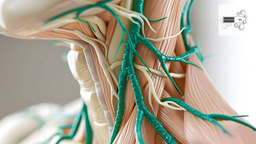The Body’s Hidden Rivers
Published in Cancer, Anatomy & Physiology, and Arts & Humanities
Cancer has long been described in terms of invasion, as if malignant cells were an army breaching the walls of the body. But invasion requires more than soldiers — it requires roads. The blood vessels have often taken center stage in this story, thanks to the drama of angiogenesis. Yet the lymphatic system — quieter, translucent, elusive — has been no less central to the cancer narrative.
The lymphatic vessels were first seen in 1622 by Gaspare Aselli, a surgeon in Milan who noticed milky threads while dissecting a dog that had recently eaten. He called them lacteals, conduits for nourishing fats. It would be centuries before physicians recognized that the same vessels could serve as highways for malignant spread. By the late 19th century, surgeons were dissecting lymph nodes in breast cancer patients, puzzled by the orderly way in which disease leapt from one node to the next. The lymphatics were not passive channels; they were routes that mapped the progression of cancer itself.
Autopsy series in the mid-20th century confirmed what the scalpel had already suggested: cancers often seeded first in sentinel nodes before venturing further into the body. The discovery of VEGF-C and VEGF-D in the 1990s revealed a molecular driver for this spread. Tumors could actively induce lymphangiogenesis, sprouting new lymphatic vessels that carried malignant cells toward distant organs. The “soil” of Paget’s metaphor included not just blood and stroma, but lymph.
Yet the story of lymphatics is not only about escape routes. Lymph nodes are also immune hubs, where dendritic cells present antigens and T cells are primed. The same vessels that carry tumor cells also carry signals of surveillance. This dual role — as conduits of dissemination and of defense — makes the lymphatic system one of cancer biology’s central paradoxes.
Modern tools are deepening this picture. Intravital microscopy shows tumor cells squeezing through lymphatic endothelium. Spatial transcriptomics reveals immune crosstalk in the nodes, sometimes suppressive, sometimes stimulatory. Clinically, lymphatic mapping with dyes and isotopes guides surgeons to sentinel nodes, and therapies targeting VEGF-C/D are under investigation as ways of slowing metastatic spread.
✨ What You’ll Learn -How Gaspare Aselli discovered the lymphatic system in 1622 -Why lymph nodes act as immune checkpoints and “archives of memory” -How cancers exploit lymphatic vessels to spread -The modern science of lymphangiogenesis and targeted therapies
Follow the Topic
Ask the Editor – Inflammation, Metastasis, Cancer Microenvironment and Tumour Immunology
Got a question for the editor about inflammation, metastasis, or tumour immunology? Ask it here!
Continue reading announcement




Please sign in or register for FREE
If you are a registered user on Research Communities by Springer Nature, please sign in